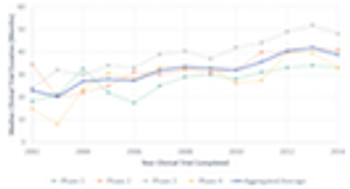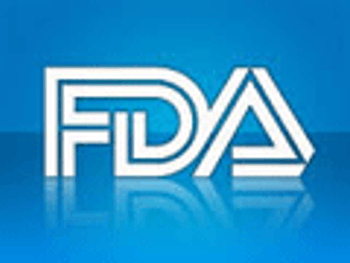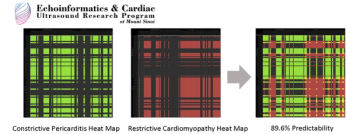
Several initiatives are focused on integrating biomarkers and personalized medicine techniques into studies.

Several initiatives are focused on integrating biomarkers and personalized medicine techniques into studies.

Investigator sites in emerging markets have a different set of challenges from those in developed regions. They cater to significantly larger patient populations, and are often not as well organized for clinical trial conduct.

The authors concluded that its secondary analysis of existing data from Study 329 demonstrated clinically significant increases in harms, including suicidal ideation and behavior (SIB) and other serious adverse events in individuals taking paroxetine.

While we become empowered with the technological enablers of centralized and statistical monitoring, it can be challenging to envision the respective functions of DMs and CRAs.

The recent landmark international trial that was conducted at 23 cancer centers around the world including Memorial Sloan Kettering Cancer Center, New York, had results published last month.

With all the focus on various data capture solutions in the clinical trials world over the past decade(s), few people seem to have noticed the exponential advances made in the real workhorse systems of the trials: RTSM. Also known as IVR, IWR and IRT, these systems actually execute randomization, blinded supply and resupply management to depots and sites, and most importantly of all, drug dispensing. Is there anything more important to get right?

The White House nominates Robert Califf to head FDA, but will he be confirmed?

Electronic data collection has grown rapidly over the course of the last ten years.

An article recently appeared in Applied Clinical Trials, which indicated that oncology trials are taking longer to complete, and the article suggested that the duration of oncology clinical trials in certain phases increased by one year to one and a half years.1 Moreover, the article delineates that ameliorations in trial duration were most likely a result of increasing protocol complexi

Will emerging drug cost assessment initiatives provide useful, valid information on total drug value?

This month marks a landmark in the quest for personalized medicine and the growing role of big data in health sciences – from clinical development through tracking patient outcomes long after a therapy has reached the market.

One of the worrisome aspects of the U.S. Open Payments transparency program is that it may discourage doctors from serving as investigators in clinical studies. The two-year-old program requires public disclosure of payments by drug and medical device manufacturers to health care professionals (HCPs) and teaching hospitals for conducting clinical trials, as well as for marketing and consulting activities. But an anomaly in the program credits to the principal investigator (PI) heading up a research site the full payment for managing and carrying out the study at that site.

Cenduit has benefited greatly from the relationship we have with our parent companies, from Quintiles’ clinical development experience to Thermo Fisher Scientific’s clinical supply chain know-how.

CRO is the first to participate in IACOR’s accreditation pilot.

FDA needs to expand and empower its Office of Health & Constituent Affairs (OHCA) and its Patient Liaison Program to better coordinate interactions with individuals and physicians seeking expedited access to experimental therapies

This article will describe my experiences in acquiring new clinical trials from the study site’s standpoint.

Ben Rotz, Director of Medical Transparency at Eli Lilly & Company discusses TransCelerate’s Data Transparency Initiative and position paper regarding patient data de-Identification and anonymization.

Officials tackle such areas as early diagnosis and treatment, patient access, and personalized medicine

The schedule is particularly tight this time because the user fee reauthorization process coincides directly with the presidential elections.

In light of two recent announcements, and this excellent article from Bloomberg it appears the role of social media in post-market adverse event reporting is being taken seriously by the FDA.

Considerable quality investments over the past decade have had little demonstrable impact on clinical trial performance and quality.

In clinical trials, the ability to effectively plan, collect and maintain essential clinical trial documentation is challenging.

The budget increase for NIH brought strong support from the biomedical research community and medical societies across the board.

Proposed partnership model explores the value of establishing alliances between CROs and networks of small and emerging biopharma companies.

Why? Because more often than not, you do not want to accrue only one participant to a clinical trial.

Optimizing study protocols and improving data quality have been notable areas of focus in the biopharmaceutical industry; the total number of endpoints in a typical Phase III protocol increased from 7 to 13.

The introduction of easily worn biosensors, such as FitBit, Garmin’s Vivofit, and Apple’s iWatch, have created a large influx of interest in the area of mobile health (mHealth).

The catalog of theranostic markers (TMs), which consists of biomarkers that help to identify patient populations best poised to respond favorably to a specific therapy, continues to expand.

Changes in biopharmaceutical R&D strategies and Technological innovations in clinical research are challenging payers on evaluating novel therapeutics and their involvement in the R&D process. While at the 2015 New York BIO annual convention, I had the opportunity to interview Nathan Tinker, Executive Director at the New York Biotechnology Association about how these changes are impacting payers.

The EU has announced a new regulation - number 536/2014 - for clinical trials, which is planned to come into force not before 28th May 2016. It is an important step because it sets out the requirements for a single clinical trial approval portal and the content of clinical trial applications to be standardized.